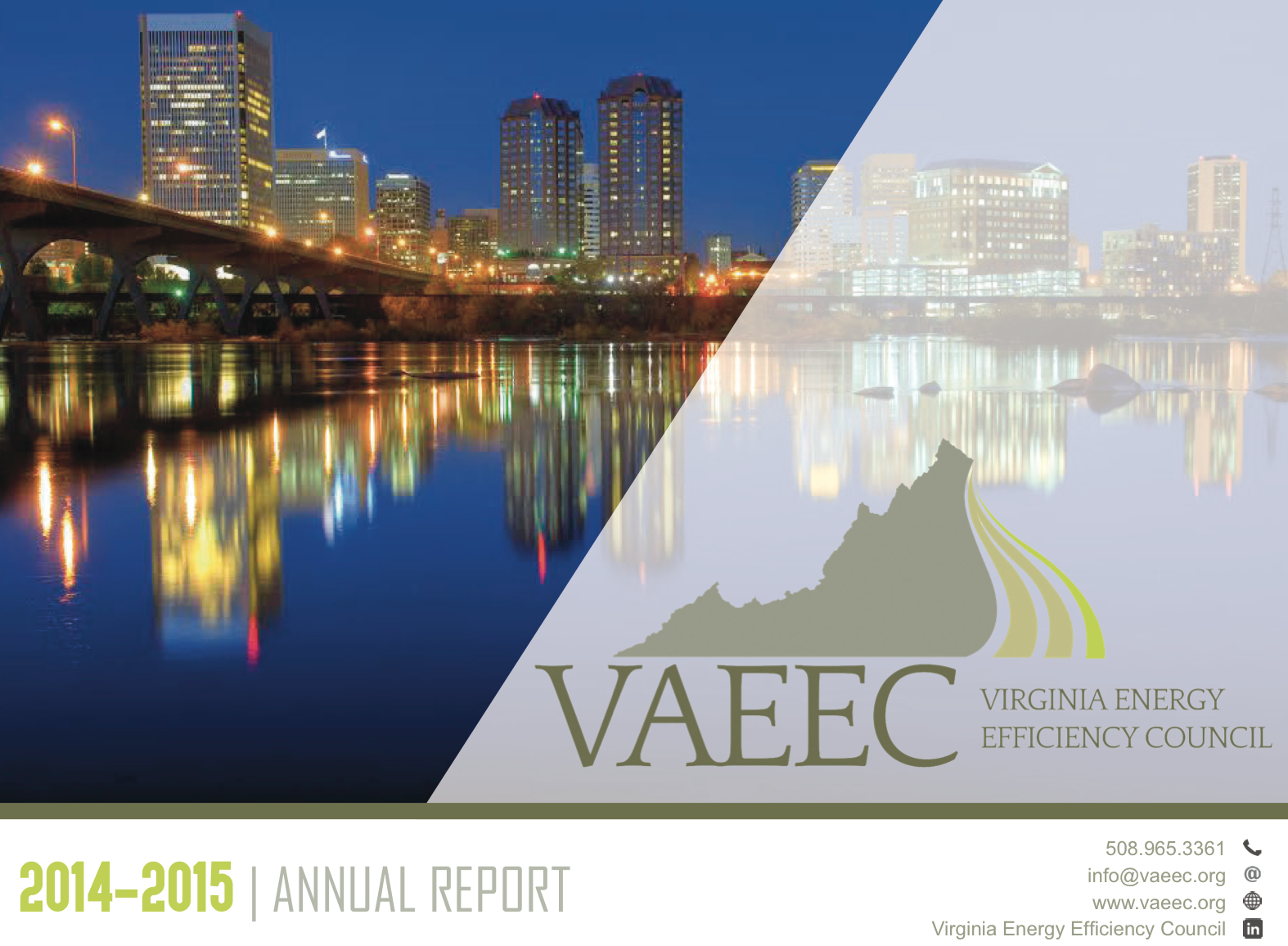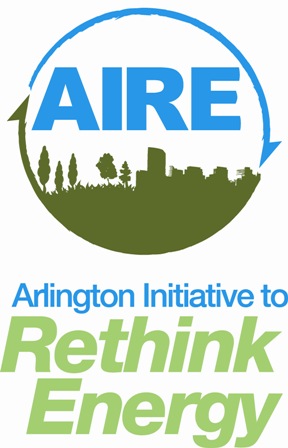December 2015

“Optimizing Communications to Low-Income Utility Customers”
Starting this month, we’re modifying our approach to the Featured Member of the Month. In this space we’ll be sharing profiles of VAEEC members and their most innovative and relevant programs in an effort to foster more information sharing and knowledge building among our network. Thanks to Opower for being our “guinea pig” with this new approach and for sharing their story.
Finding ways to save energy and shrink utility bills can make a huge difference for low-income families across the U.S. struggling to make ends meet.
VAEEC member Opower – a company that helps utilities around the world reduce energy consumption and improve relationships with their customers – engages more than 500,000 low-income customers across the U.S. through targeted, personalized communications, empowering low-income families with the information they need to lower their bills.
There are often assumptions that low-income customers would have trouble reducing their energy usage because they have fewer appliances to turn off. Yet Opower has found that EE savings are on par with average customer savings. Further, low-income customers are even more likely than non-low-income customers to take equipment-based actions – things like insulating doors, installing efficient appliances/lighting, insulating attic, etc. — in response to Opower’s Home Energy Reports (HERs). These actions might be undertaken on their own or through weatherization programs that utilities and others offer. And low-income customers report higher rates of satisfaction with the HERs than average customers.
“Opower is committed to giving utilities tools to bring more value to their customers and their communities. There’s a great deal we can do to help low-income families by empowering them with insights that are tailored to their needs and provide practical ways they can reduce energy costs,” says Alex Laskey, Opower President and Co-Founder.
The lessons Opower has learned (and shared through various resources like the white papers which you can access below) in their outreach to low-income customers has huge implications.
“The U.S. Low Income Home Energy Assistance Program reaches fewer than 25% of eligible households, yet the needs of low-income families are growing. As funding from the American Recovery and Reinvestment Act (ARRA) and LIHEAP decrease or fades away completely, it is critical to help families maximize the value of every available dollar. Energy efficiency offers a promising opportunities to help low-income families manage their energy costs,” says Jim Kapsis, Opower’s Vice President of Global Policy & Regulatory Affairs.
You can download two of Opower’s white papers on this topic on their website:
Unlocking Energy Efficiency for Low-Income Utility Customers: Four Key Lessons from Real-World Program Experience
Beyond Weatherization: How Innovative Program Strategies Can Enhance Core Low-Income Programs
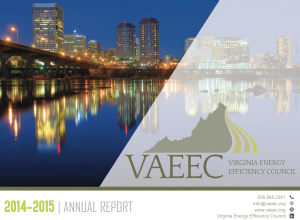 Download the full Annual Report.
Download the full Annual Report.
The 2014 – 2015 membership year saw the Virginia Energy Efficiency Council make great strides towards its goal of growing the energy efficiency industry in the Commonwealth. Not only did we initiate and facilitate successful conversations on policy and regulation, we were also very pleased to see some of our long-held recommendations implemented by Virginia’s new Governor in the updated Virginia Energy Plan.
One recommendation was for the formation of a stakeholder group to identify where we stood with respect to: our state’s voluntary energy efficiency goal, how it was going to be tracked, and what the plan
was to achieve it. The appointed Governor’s Executive Committee on Energy Efficiency is just the kind of stakeholder group needed, and we welcome its mandate to assist the state in meeting the voluntary goal through an actionable plan. Four of the VAEEC’s Governance Board Directors participate on the Committee, and other Directors participate in subcommittees to support the GEC’s work.
The VAEEC is also proud to have been part the state energy office’s winning proposal team on a Dept. of Energy State Energy Program grant. As a subrecipient on this award, we will support the GEC’s efforts as a convener, technical assistance provider, and sounding board for policies and implementation strategies.
Lastly, the VAEEC thanks its primary funder, the Energy Foundation for its continued support and guidance. We have leveraged its grant many times over through our partnerships, proposals, and programs – and are very grateful for the capacity it gives us.
Warm regards to our members and fellow energy efficiency supporters,
Cynthia Adams, VAEEC Governance Board Chair
CEO, Pearl National Home Certification
When the EPA Clean Power Plan rule was finalized this summer, they announced the Clean Energy Incentive Program (CEIP) which allows states to receive double credit for energy efficiency and renewable projects in low-income communities. The EPA is currently accepting comments on the CEIP through December 15, and the VAEEC encourages its members and stakeholders to submit comments.
To comment:
EPA invites you to provide written responses to the attached questions to the non-regulatory docket established for this purpose. EPA will accept input, identified by Docket ID Number EPA-HQ-OAR-2015-0734 through December 15, 2015. You may use one of the following methods:
· Go to www.regulations.gov and follow the on-line instructions for submitting comments.
· Send comments by e-mail to a-and-r-Docket@epa.gov.
· Fax your comments to: (202) 566-9744.
· Mail your comments to:
EPA Docket Center,
Environmental Protection Agency, Mail Code: 28221T
1200 Pennsylvania Ave., NW
Washington, DC 20460
Background:
Under the leadership of President Obama, EPA issued the Clean Power Plan, a historic step to fight climate change. The Clean Power Plan will reduce carbon pollution from power plants, the nation’s largest source, while maintaining energy reliability and affordability. EPA also issued final Carbon Pollution Standards for new, modified, and reconstructed power plants, and proposed a Federal Plan and model rules to assist states in implementing the Clean Power Plan.
We look forward to your participation and please extend this invite to your organization’s leadership. Information about the Clean Power Plan can be found here. Get more information about the Clean Energy Incentive Program here.
Questions to consider:
What should EPA consider when defining criteria, terms and requirements under the CEIP?
· What definition(s) of ‘low-income community’ should be required for eligible energy-efficiency (EE) projects?
· What criteria should be used to define eligible wind and solar projects, as well as eligible EE projects implemented in low-income communities? (e.g., by sector (residential, commercial, etc.) or by geography (where a project takes place and who benefits from it))
· What should be the evaluation, measurement and & verification (EM&V) requirements for eligible projects; the requirements for M&V reports of quantified megawatt-hour (MWh); and the requirements for verification reports from an independent verifier?
· How could EPA set criteria for states, tribes and territories for whom goals have not yet been established in the final Clean Power Plan’s Emission Guidelines (EGs) to participate in the CEIP?
The following three questions have been posed by stakeholders:
· What commencement date is appropriate for a project to qualify as eligible for the CEIP?
· How should ‘commence construction’ of an eligible wind or solar project and ‘commence operations’ of an eligible low-income EE project be defined?
· Should CEIP allowances or emission reduction credits (ERCs) be available for projects in jurisdictions without affected entities (e.g. tribal lands and states without EGUs). If so how should the CEIP mechanism be designed to address these areas?
What should EPA consider regarding the timing and distribution of allowances under the CEIP?
· How should the 300 million short ton CO2 emissions-equivalent matching pool be allocated among states participating in the CEIP?
· How should the 300 million short ton matching pool be split between the two reserves: one for wind/solar, one for low-income EE?
· When should EPA allocate matching allowances or emission reduction credits (ERCs) to a state, and when should awards from these allocations be made to eligible project providers?
· How should matching allowances or ERCs that are allocated to a state but not awarded to eligible projects be redistributed among other states with unmet demand for matching allowances or ERCs, and when should this redistribution take place?
What should EPA consider when designing the mechanics of the CEIP?
· What are the appropriate mechanisms a state (in the case of a state plan) or EPA (in the case of a federal plan) should use to review project submittals and issue early action allowances or ERCs?
· How should the 300 million short ton CO2 emissions-equivalent matching pool be converted into ERCs, which are based on MWh?
· What mechanisms should EPA consider for maintaining the stringency of rate-based emission standards during the compliance periods to account for the issuance of early action ERCs for MWh generated or avoided in 2020 and/or 2021?
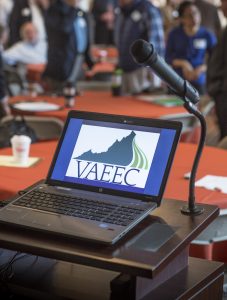 Our November 12th member meeting was the most well attended meeting for the VAEEC to date, and those 110+ attendees were treated to a packed room and packed agenda. It was a great starting point for me as the new Executive Director of the VAEEC, and I hope that those in attendance enjoyed the diverse speaking topics as much as I did. (If you attended the meeting and would like to share your feedback, we’ve got a brief survey up online.)
Our November 12th member meeting was the most well attended meeting for the VAEEC to date, and those 110+ attendees were treated to a packed room and packed agenda. It was a great starting point for me as the new Executive Director of the VAEEC, and I hope that those in attendance enjoyed the diverse speaking topics as much as I did. (If you attended the meeting and would like to share your feedback, we’ve got a brief survey up online.)
Here’s my synopsis of the meeting, and you can download all of the presentations on the Resources page):
After our board chair, Cynthia Adams with Pearl Certification, did the welcome and introduced me, I laid out my vision for the next 12+ months for the VAEEC. In preparation for the meeting, I had spoken with all of my board members and during those conversations three common ideas emerged as top priorities for us:
- The Council should be a trusted source of information for decision makers, businesses or anyone interested in energy efficiency policy and innovation. We’re already well on its way with this objective through our work with the Governor’s Executive Committee on energy efficiency.
- More networking. To that end, we will be announcing some exciting new opportunities in the future so stay tuned.
- More member resources. Building off our monthly e-newsletter, we will be providing more original content as well as other resources for our members in the coming months.
This is just the beginning. I also want to hear from you, our members, on ways we can help you be successful in the energy efficiency space. To that end, we will be sending out a member survey at the beginning of the new year so be on the lookout for it.
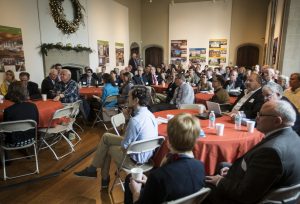 Our first speaker was Dr. Bob Holsworth with DecideSmart, who discussed the impacts of recent election results on Virginia’s energy efficient future, which, according to Dr. Holsworth, will have zero impact since the elections kept the House and Senate divided in the same ratio as before.
Our first speaker was Dr. Bob Holsworth with DecideSmart, who discussed the impacts of recent election results on Virginia’s energy efficient future, which, according to Dr. Holsworth, will have zero impact since the elections kept the House and Senate divided in the same ratio as before.
Next was Mike Dowd with the Department of Environmental Quality who gave an update on the EPA’s Clean Power Plan. Mike’s presentation was full of details such as how the draft and final rule differed; how Virginia’s comments to the EPA were addressed; various pathways to compliance, and the timeline moving forward. This is definitely worth checking out and is available on our Resources page.
Hayes Framme with the Office of Governor McAuliffe was our next presenter who gave a brief update on the Governor’s Executive Committee on Energy Efficiency (GEC). Four of the VAEEC’s board members sit on the GEC and the Council is a partner of the Department of Mines, Minerals and Energy, the state agency who provides staffing to the GEC, to work on some of the key components of the GEC work plan. Our work with the GEC is just getting started so expect to see more updates about the GEC at our spring meeting as well.
After the GEC update, we held our member spotlight presentation on Arlington County. John Morrill, a VAEEC board member representing Arlington County, gave a brief update on their program with a few highlights, including their highly successful LED program.
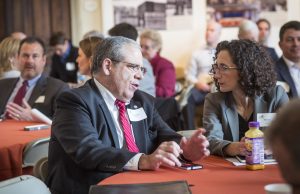 After lunch, VAEEC board member Marisa Uchin with Opower presented on energy efficiency policies and programs taking place in New York and California. Hurricane Sandy was a wake up call to decision-makers in NY on just how vulnerable their energy system is to natural disasters. As stated in Marisa’s presentation, Reforming the Energy Vision is a “comprehensive reform aimed at reorienting the electric industry and ratemaking paradigm toward a customer-centric approach, and one that uses distributed energy resources (DER) as a primary tool in the planning and operation of efficient and resilient electric distribution systems.”
After lunch, VAEEC board member Marisa Uchin with Opower presented on energy efficiency policies and programs taking place in New York and California. Hurricane Sandy was a wake up call to decision-makers in NY on just how vulnerable their energy system is to natural disasters. As stated in Marisa’s presentation, Reforming the Energy Vision is a “comprehensive reform aimed at reorienting the electric industry and ratemaking paradigm toward a customer-centric approach, and one that uses distributed energy resources (DER) as a primary tool in the planning and operation of efficient and resilient electric distribution systems.”
Next up Mary Shoemaker with American Council for an Energy-Efficient Economy presented ACEEE’s new scorecard and highlighted how Virginia compares to its neighbors, which unfortunately, isn’t favorable.
After the ACEEE presentation, we held a “lightning round” for utility updates. Dominion and Appalachian Power both gave brief updates on their low-income energy efficiency programs. In the future, we would like to extend an invitation for all of our members to briefly highlight their work in this format so please come prepared to brag at the spring meeting!
Our final speaker of the day was VAEEC board member Bill Greenleaf with Virginia Community Capital who walked us through the new Virginia SAVES program and the new PACE loan program for commercial customers, thanks to recent legislation passed in the 2015 General Assembly session. The VA SAVES program is an interest rate subsidy program that utilizes Virginia’s allocation of federal qualified energy conservation bonds. This program is open to local governments and the private sector and is capped at $20 million. PACE (Property Assessed Clean Energy) is a loan program for energy efficiency, renewable energy and water efficiency projects. The loans, provided by private lenders, are repaid on the commercial real estate tax bill and stay with property upon resale.
As you can tell, we had a very productive and informative meeting. We’re already underway planning for the spring meeting and we hope you can join us then.
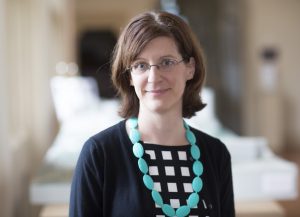
The author and VAEEC’s new Executive Director, Chelsea Harnish.
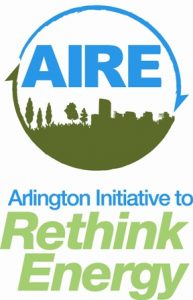 Arlington County government joined VAEEC in 2014. The Arlington Initiative to Rethink Energy (AIRE) helps our community make smart decisions about energy and supports individual actions that improve and sustain Arlington’s quality of life. Through rethinking energy, we are committed to energy practices that will make Arlington County a more prosperous, healthful, safe and secure place to live, work and play. Come join us.
Arlington County government joined VAEEC in 2014. The Arlington Initiative to Rethink Energy (AIRE) helps our community make smart decisions about energy and supports individual actions that improve and sustain Arlington’s quality of life. Through rethinking energy, we are committed to energy practices that will make Arlington County a more prosperous, healthful, safe and secure place to live, work and play. Come join us.
October 27, 2015 — The VAEEC is pleased to welcome Chelsea Harnish as Executive Director. She takes the helm on November 2. Members and other stakeholders are invited to meet Chelsea at the VAEEC meeting on November 12.
Chelsea brings an extensive network of contacts working on clean energy and energy efficiency in the Commonwealth, a rich history of engaging with state agency staff, industry and utility representatives, and a decade’s experience in energy policy and the nonprofit sector.
 She comes to the VAEEC from the Virginia Conservation Network where she helped partners working on climate and energy issues strategically plan their approaches to achieving their collective goals. She also served as the Virginia Policy Coordinator for the Chesapeake Climate Action Network and played a variety of roles with a small nonprofit on Cape Cod in Massachusetts advocating for the Cape Wind project, America’s first announced offshore wind project.
She comes to the VAEEC from the Virginia Conservation Network where she helped partners working on climate and energy issues strategically plan their approaches to achieving their collective goals. She also served as the Virginia Policy Coordinator for the Chesapeake Climate Action Network and played a variety of roles with a small nonprofit on Cape Cod in Massachusetts advocating for the Cape Wind project, America’s first announced offshore wind project.
“I look forward to continuing to work in the energy sector in this new capacity,” said Chelsea. “Energy efficiency is a vital component to energy policy discussions and the Virginia Energy Efficiency Council plays a crucial role in supporting programs and policies that advance energy efficiency in Virginia.”
“As Virginia develops plans for federal Clean Power Plan compliance and meeting the state’s voluntary energy efficiency goal, the energy efficiency industry is poised to take center stage. It’s a crucial moment for the businesses, local and state government, and utilities we represent. Chelsea has the experience and expertise to position the VAEEC and its members at the forefront of this opportunity,” said Cynthia Adams, VAEEC Governance Board Chair.
We’re back with another installment of our popular biannual VAEEC meetings, offering you the opportunity to network with other leaders in the energy efficiency field, get informed and timely updates on issues critical to the industry in the Commonwealth, and help chart the course for the VAEEC.
Working Agenda:
10:15 Welcome and Introduction of new Executive Director (Cynthia Adams, VAEEC Governance Board Chair)
10:25 Report from Governor’s Executive Committee on Energy Efficiency (Hayes Framme, Chief Energy Efficiency Officer)
10:45 Update on the Clean Power Plan (Mike Dowd, Department of Environmental Quality)
11:05 The Impact of Recent Election Results for Virginia’s Energy Future (Invited: Political Commentator Dr. Bob Holsworth)
11:35 Member Spotlight (John Morrill, Arlington County)
12:00 Lunch
12:30 Innovation from Outside the State (Marisa Uchin, Opower)
12:50 Briefing on American Council for an Energy Efficient Economy’s State Scorecard (Mary Shoemaker, ACEEE)
1:05 “Lightning Round” (Utility representatives)
1:25 Commercial PACE and the VA Saves Green Community Loan Program (Bill Greenleaf, Virginia Community Capital)
1:45 Discussion: How will VAEEC Participate in Governor’s Executive Committee Process?
1:55 Wrap up
Register Now!
Lunch will be served, courtesy of our sponsor Community Housing Partners.
Please note the Branch Museum of Architecture and Design in Richmond is a different location than recent meetings. The meeting space is generously sponsored by D&R International.
The meeting is free and open to all. Non-VAEEC members are asked to make a small donation. We encourage you to invite friends and colleagues.
Please feel free to contact us with any questions about the meeting, and we look forward to seeing you on November 12.
The emissions scandal at Volkswagen was the latest instance in the auto industry’s long history of skirting safety or environmental rules, with regulators now vowing to establish more stringent tests.
Makers of consumer appliances and electronics have gone down a similar path, but tight federal standards and frequent testing have made it harder for manufacturers to skirt the rules.
Still, consumer groups and advocates said regulators must remain vigilant because the pace of technological change and innovation often exceeds the speed at which federal standards can be established. Common household items are packed with more electronics than ever, adding lots of features, but also providing the possibility of deceit.
Last week, for instance, Samsung denied that some of its high-definition televisions used less energy during testing conditions than in real-life use. This came after a European Union-financed laboratory raised questions about whether a feature known as “motion lighting” was intended to game energy efficiency tests.
Samsung said the technology, which dimmed the screen’s brightness in some circumstances, was an “out-of-the-box feature” that remained turned on whether at home or during tests. The feature “is not a test-cheat” and helps save energy, the company said in a statement posted online.
Read the full story. (The New York Times)
 In case you missed it, in early September Governor McAuliffe announced the VirginiaSAVES Green Community Program, a loan program created to lower financing costs for energy efficiency, renewable energy generation and alternative fuel projects. This low-cost financing tool is available to local government, institutional and commercial and industrial entities in the Commonwealth and is funded through $20 million in federally-allocated Qualified Energy Conservation Bonds (QECBs).
In case you missed it, in early September Governor McAuliffe announced the VirginiaSAVES Green Community Program, a loan program created to lower financing costs for energy efficiency, renewable energy generation and alternative fuel projects. This low-cost financing tool is available to local government, institutional and commercial and industrial entities in the Commonwealth and is funded through $20 million in federally-allocated Qualified Energy Conservation Bonds (QECBs).
Governor McAuliffe: “As stated in my Energy Plan, providing the public and private sectors with the tools they need to reduce energy consumption and save on energy costs is critical for building a new Virginia economy. VirginiaSAVES encourages investments that will save money, improve energy security, lessen Virginia’s dependence on federal spending and attract new jobs and advanced energy industries.”
See sample numbers for a $2M loan. And here is a program overview from Virginia Community Capital.
Developed by the Division of Energy of the Virginia Department of Mines, Minerals and Energy, VirginiaSAVES (which stands for Sustainable and Verifiable Energy Savings) is administered by Clean Source Capital and Abundant Power Group.
Visit the VirginiaSAVES website for more information, borrower eligibility and project selection criteria, service provider registration forms and other program documents and information.
The Virginia Department of Environmental Quality (DEQ) is in the middle of a series of informal listening sessions on the U.S. Environmental Protection Agency (EPA) Clean Power Plan to cut carbon emissions (greenhouse gases) from existing power plants that generate electricity from fossil fuels.
The following remarks will be delivered at the Fairfax session tonight by the Chair of VAEEC’s Governance Board; similar remarks have been and will be delivered by Governance Board members at other session. There are three remaining sessions (September 30, 2015, Henrico, VA; October 1, 2015, Big Stone Gap, VA; October 6, 2015, Portsmouth, VA).
“I’m Cynthia Adams, and I am Chair of the Virginia Energy Efficiency Council. I’ve also been appointed by Governor McAuliffe to the Virginia Energy Council and to the Governor’s Executive Committee on Energy Efficiency. In my professional life I’m the co-founder of a business which focuses the residential energy efficiency market. So from all of these perspectives, I am here tonight to advocate for energy efficiency having a central role in Virginia’s Clean Power Plan Compliance.
The Clean Power Plan affords Virginia an opportunity to make sensible energy decisions now that will benefit the Commonwealth for generations to come.
Energy efficiency is one of the primary tools available to help states meet their targets, and when approached from a performance-based perspective can be counted on to lower carbon emissions.
Energy efficiency is the least expensive resource option to meet our energy supply needs. Plus it saves consumers money with lower energy bills.
Energy efficiency is the cleanest option as it represents energy that doesn’t have to be created or consumed, and its implementation reduces multiple pollutants created by other fossil fuel sources.
Energy efficiency is the safest, most reliable option because through demand reduction it improves our energy security by reducing risk and increasing reliability.
Energy efficiency promotes local economic development and job creation. A recent industry census by the Virginia Energy Efficiency Council documented a $2.2 billion energy efficiency industry in Virginia. This industry supports at least 13,000 jobs at more than 500 firms.
The American Council for an Energy Efficient Economy has found that for every $1M spent in building efficiency improvements, 20 jobs are supported. And for every $1M in avoided consumer energy costs, another 17 jobs are supported.
The Virginia Energy Efficiency Council strongly encourages Virginia to include a robust role for energy efficiency in its compliance plan as a way to meet federal guidelines while generating significant economic and environmental benefits for our fellow citizens.
We strongly advocate for a role for the private market to play in helping the state meet its goal, and we stand at the ready to be a resource to the DEQ should the agency have a need.”


